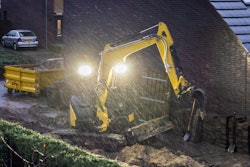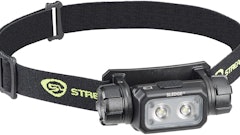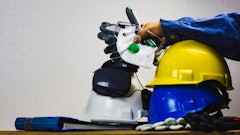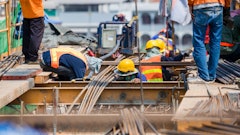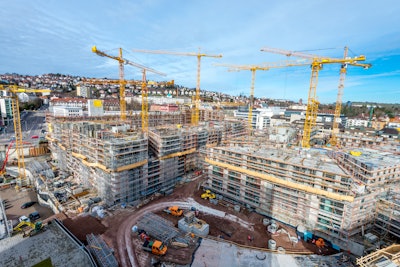
The modern construction industry needs tools that streamline communication, boost productivity, and protect workers in harsh, dynamic environments. Traditional methods such as two-way radios, mobile phones, or hand signals frequently lead to inefficiencies, miscommunication, and unnecessary strain on workers who need both hands for operating machinery and handling materials.
Smart eyewear, equipped with built-in audio and intuitive voice activation, is now becoming a viable alternative to outdated solutions. These innovative devices create huge improvements in on-site communication that help reduce cognitive overload and seamlessly fit into daily routines. Construction leaders and site managers are starting to recognize the potential of smart eyewear to elevate workflow efficiency while upholding—and even enhancing—strict safety standards.
Enhance Communication, Increase Productivity
The usual indication of a productive construction site is efficient communication. Without it, errors proliferate, tasks stall, and team coordination suffers. Sites often teem with noise from heavy machinery, power tools, and various activities happening simultaneously. This distraction can hamper verbal instructions and disrupt workers’ ability to hear critical updates or instructions.
Traditional two-way radios or mobile phones, while considered sufficient, require hand operations that can be inconvenient or even unsafe in a busy environment. They can also cause workers to lose focus on tasks that require continuous attention.
Smart eyewear addresses these issues by providing hands-free audio capabilities. Through built-in microphones and speakers, these devices function much like a hybrid communication system that allows workers to keep their eyes on the job and their hands on the tools. Voice-activated functionalities further reduce unnecessary hand movements, which is particularly significant in high-risk environments where reflexes and attention are non-negotiable—crane operations, complex rigging, or electrical wiring tasks.
More on Construction Safety
How Technology is Building a Safer Construction Environment - A new era of artificial intelligence and machine learning is transforming how we perceive and manage workplace safety.
Why Cloud-Based Communication is Revolutionizing Construction - Forward-thinking construction professionals in 2025 are moving beyond outdated communication systems, ditching outdated systems and embracing the flexibility and efficiency of cloud-based communication.
Jobsite Enforcement of Situational Awareness Saves Lives - Outfitting heavy machinery, equipment, and tools with enhanced object detection and visibility devices is one recommended remedy.
Fewer misunderstandings also translate into fewer project delays. For example, a site manager on the ground floor can instantly update a foreman on the third floor about a change in building specifications. There is no lag spent walking across the site or waiting for the foreman to notice a missed call. With more direct communication, tasks are executed faster and more accurately, which can make a decisive difference in meeting tight project deadlines. Crews can also coordinate with subcontractors and specialty teams without the frustration of static-filled radio channels or phone calls that go unanswered due to busy hands. This streamlined communication fosters a more synchronized environment, leading to greater output without overextending labor hours or equipment usage.
Another underrated benefit is the boost in team morale. Construction sites frequently involve diverse groups of workers who have varying levels of expertise. Seamless communication reduces friction when clarifying instructions or asking for help. When supervisors can quickly deliver constructive feedback or new insights, and workers can request immediate guidance, the result is a learning-based culture built on cooperation. Moreover, clearer communication channels ensure specialists, such as electricians or plumbers, can better plan around each other’s schedules, mitigating overlap or idle time. Together, these factors translate into a smoother, more efficient construction process.
Improved Worker Safety
Safety ranks foremost on any construction site, but maintaining it can be challenging amid a flurry of tasks, strict deadlines, and the inherent dangers of heavy machinery.
Safety ranks foremost on any construction site, but maintaining it can be challenging amid a flurry of tasks, strict deadlines, and the inherent dangers of heavy machinery. Conventional communication and personal protective equipment (PPE) setups often demand manual adjustments. Workers must frequently check radios, glance at phones, or shield their hearing from on-site noise. Distractions such as these can lead to fatigue or mental overload and make it difficult to remain vigilant about possible hazards.
Smart eyewear, by design, helps alleviate some of these challenges. With embedded audio capabilities, workers avoid continuously handling radios or mobile phones. This hands-free approach lowers the likelihood of dropping essential gear and reduces the cognitive effort of juggling multiple devices. Over the course of a long day on a construction site, less mental clutter can translate into fewer errors, enhanced situational awareness, and improved concentration.
Leading smart eyewear products frequently include safety lenses that protect workers from debris, sun exposure, and harmful ultraviolet or blue light. These lenses, in combination with the rugged design required for construction conditions, shield workers’ eyes from flying particles and extreme outdoor elements. Many models already comply with the Occupational Safety and Health Administration (OSHA) regulations for impact resistance and durability. When we consolidate protective eyewear and communication technology into a single device, users can eliminate the common problem of wearing multiple pieces of cumbersome gear that don’t always fit well together. As a result, workers remain protected without sacrificing efficiency or comfort.
Seamless Integration into Daily Routines
Adoption of new technology in construction can fail if it disrupts well-established patterns or demands extensive retraining. Fortunately, many smart eyewear products prioritize intuitive design and minimal onboarding. They fit comfortably alongside standard PPE, function reliably over long shifts, and offer straightforward maintenance routines.
Hard hats, ear protection, and reflective vests, for example, remain staples on any construction site. Some types of smart eyewear are designed to be compatible with these items. Slimmer frames, adjustable temple arms, and flexible materials reduce interference with hard hats or ear muffs. Workers can don their usual protective gear without struggling to fit an extra device around their heads or across their ears. With such a low-conflict design, it encourages higher adoption rates as employees are far more likely to use equipment that doesn’t complicate the layering of required PPE.
Despite these advancements, some innovations fail to gain traction because they demand hours of tedious training or the introduction of new software platforms. Smart eyewear intentionally avoids this challenge by offering easy-to-navigate interfaces that often resemble familiar smartphone apps. Voice-activated commands typically rely on intuitive phrases, and step-by-step tutorials can be accessed immediately. These user-friendly features allow workers to adapt quickly, cutting down on training sessions that could otherwise pull them away from core responsibilities. Site managers can also update settings or push essential notifications to the eyewear without requiring each worker to handle complicated customization steps.
On a positive note, many smart eyewear are now built for dust, moisture, impacts, and temperature extremes. These eyewear generally feature reinforced frames, protective casings around audio components, and water-resistant seals. Users can easily wipe down or sanitize the glasses at the end of a shift without risking damage to sensitive electronics. Routine maintenance procedures, such as cleaning lenses or checking battery connections, are typically straightforward.





